Improving Organic Search Performance with Structured Data
THE DIGITAL MARKETING PROBLEM FOR HOTELS – DECREASING ORGANIC TRAFFIC & INCREASING CPCS
Many hoteliers have experienced a similar trend with their organic traffic from Google: it is decreasing. Over the last several years, Google has drastically changed the way they present websites on their result pages. Here, we will walk through some of the recent changes from Google’s Result Pages, how they might be impacting organic search experience and a possible solution to help mitigate some of the negative impacts that websites might be experiencing.
Around 2012 – Back in the glory days of search engines, the organic search results were displayed right up at the top, very easy for the searcher to find. Google had ads above those, and some on the sidebar, but they were more easily distinguished from the Organic Search Results and the top organic result could rely on as much as 33% of the overall clicks on the page.

2015 – By this year, Google had made some serious changes to their result pages. You can see the local map pack becomes more prominent, ads now take up multiple lines with several links available to click on and you cannot even see the 1st organic results unless you scroll further down, they are “below the fold”. The difference between this result page and the one from 2012 illustrate how much Google’s page has changed in those years. There seems to be no priority to display organic results at the top and the page seems very ad heavy.
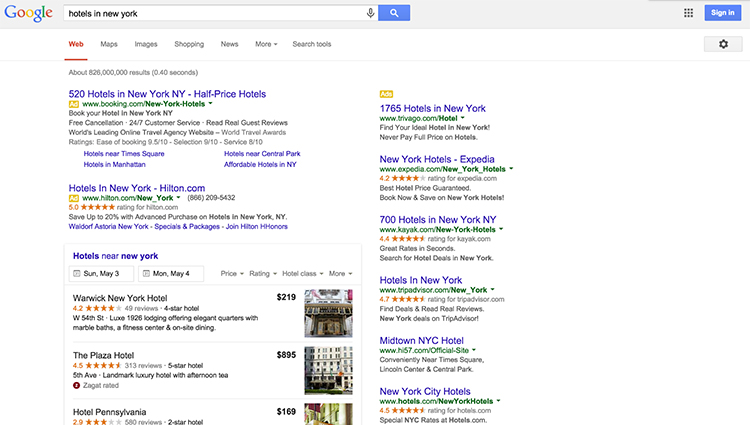
2017 – The biggest difference between here and 2015 is that there are no longer ads being displayed on the sidebar. However, we have increased the number of ads above the local pack to a total of 4. As we scroll down, we see 2 organic search results, news results, and then more organic. As of today, most of what is being displayed on the first page are not organic results, but either ads or information that Google has deemed relevant to the searcher are shown instead. While the first organic search result still receives a vast majority of the clicks on the page, the rest of the organic results listed get a markedly lower number of clicks in comparison to the past.
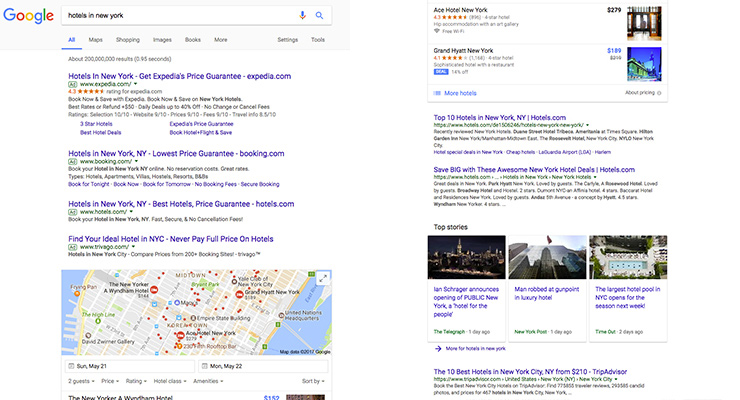
Changes in Google’s Search Result Page have resulted in some drastic changes to the way people interact with Search Engines. As we mentioned above, interaction and CTRs with organic results outside of the first position have declined. With the reduction in the number of ads on the front-page, the demand for that ad space has increased significantly, which results in an increase of as much as 60% in Brand CPCs.
It’s also no surprise that Google continues to make more money off of ads year-over-year, with the largest increase in revenue coming from mobile searches. With the increase in mobile, the fact that the organic search results are being pushed further down the page is an even larger problem; with smaller screens, people have to view more of the page in order to see the full list of organic results. Evaluations from these changes show that the biggest losers for impressions and traffic with the new layout are in Google’s organic search results.

A PROPOSED SOLUTION
Unfortunately, Google doesn’t seem to be making any changes or indications that they are going to go back to an older model with more prominent visibility for organic results. The majority of the websites that we work with are seeing an increase to their CPCs through paid traffic and a decline in their organic traffic from Google. While we don’t believe that we can combat this trend and effectively give our partner websites the same visibility they once enjoyed through Google’s organic results, we wanted to explore any possible way that we might be able to provide an additional benefit above what our client’s competitors were doing. If we are not able to completely reverse the trend of declining search traffic, can we at least slow it down? One area we saw a great opportunity in was with structured data.
WHAT IS STRUCTURED DATA (SCHEMA)?
Structured Data is not anything new to the Internet; it is simply a way for very specific data to be conveyed with a high level of organization. This allows information to be easily read by spiders and bots on the Internet in order to aggregate that information in an automated fashion for relational databases. Whether or not you have heard the term structured data, you are probably familiar with the results if you have ever searched for a recipe online:
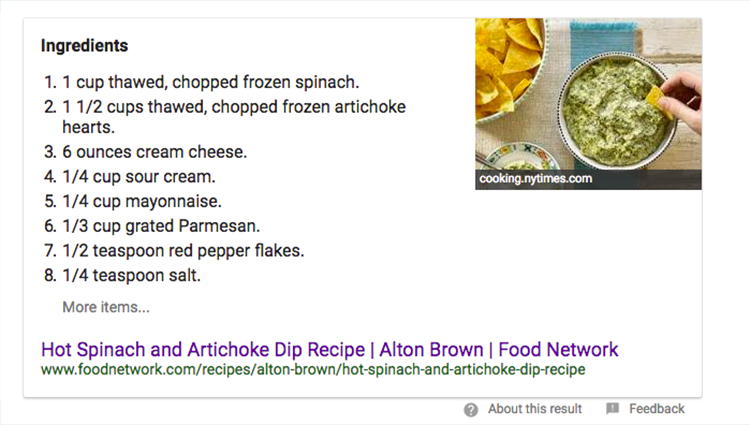
Everything within this search result is populated through structured data to be shown as a “featured snippet” from Google, which is able to show this information automatically. The screenshot below from Google’s Structured Data Testing Tool shows the amount and type of information that can be shown through Schema. Other sites on the Internet can then utilize that information automatically, as within the example above with Google’s display of the artichoke dip ingredients.
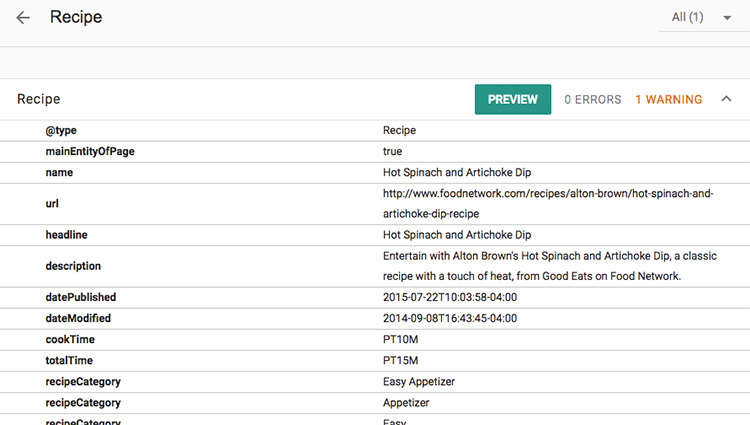
Recently, Google announced that they would be showing featured snippets for hotels through rich cards. Rich cards from Google allow hotels to display more accurate information and highlight specific amenities or aspects of their website to the searcher. Google has explicitly stated that they do not take structured data into account as a ranking factor. However, there is a lot of evidence to show that organic CTR for websites is a ranking factor. If structured data provides more information to the user, which should help improve CTR, which should improve rankings, which would improve CTR and so on. We also have a lot of evidence to show that structured data is a marker for showing information within local search results as well. So structured data could be a strategy to help improve organic rankings and traffic from Google, especially considering most independent hotels do not currently utilize structured data on their websites. We decided it would be a great idea to test this with one of our clients.
RESULTS – A SIGNIFICANT INCREASE IN ORGANIC PERFORMANCE
GCommerce works with a hotel in a major metropolitan area. They get a significant percentage of their traffic and revenue from Google’s organic search results. As a result of changes within Google’s display of their search result page, along with changes in rankings, this hotel’s website has seen a significant decrease in traffic and revenue from Google. Year-over-year, this hotel saw an average decrease in sessions, users, revenue, transactions, and conversion rate of about 14%, comparing January-May, 2015 with the same time period in 2016. In late January of 2017, we implemented structured data markup to this website. When we look at the same comparison of data, but with 2017 and 2016 data, we see an average decline of less than 6.5%. The number of users is nearly equal to 2016 data and the number of transactions actually eclipsed 2016 numbers in March:

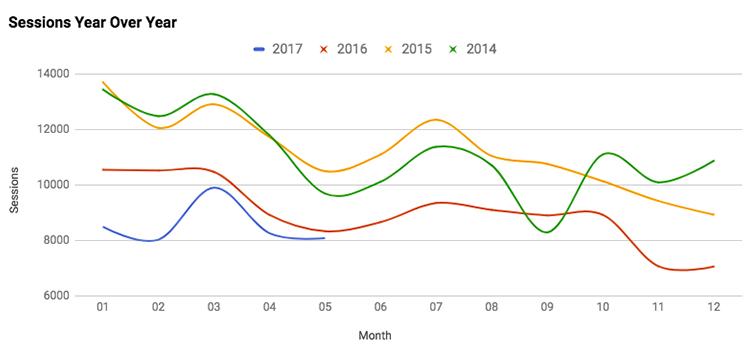
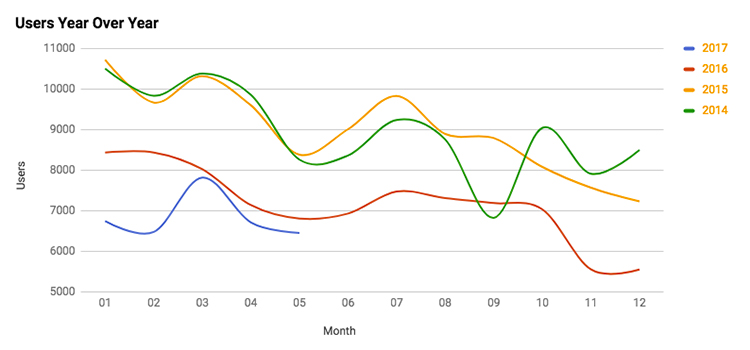
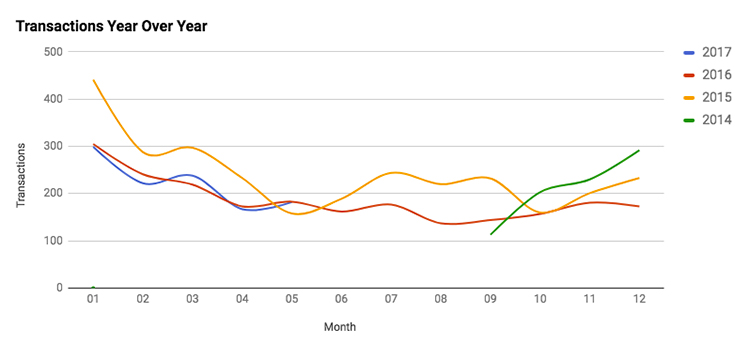
CONCLUSION – MITIGATE DECLINING ORGANIC TRAFFIC & REVENUE
Here at GCommerce, we are wise enough to know that we cannot completely reverse trends within Google’s result pages. Industry-wide, organic traffic is declining and it will likely continue to decline as Google continues to monetize their result pages. With increased costs in advertising, hotels are going to have to utilize new technologies in the ways that they bring traffic to their website and how users interact with their site in order to get more bookings with similar marketing dollars. One of the ways that GCommerce has proven to help impact organic traffic and rankings is with structured data markup. For help in adding structured data to your website, contact us today.


